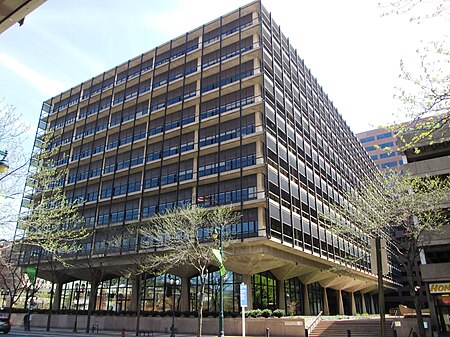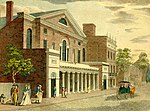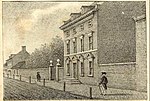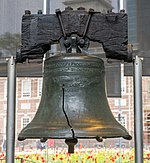Rohm and Haas Corporate Headquarters

The Rohm and Haas Corporate Headquarters in Philadelphia, Pennsylvania, United States was built as the headquarters for the former chemical manufacturing company Rohm and Haas. Completed in 1964, the building was the first private investment for the urban renewal of the Independence Mall area. Only two blocks from Independence Hall the building, designed by Pietro Belluschi and George M. Ewing Co., was lauded for its respect to the nearby park and historical buildings. Philadelphia's city planners praised the Rohm and Haas Corporate Headquarters as a standard for all redevelopment buildings.The nine-story building's most notable feature is its translucent, corrugated sunscreens. Supported by aluminum lattices throughout the building's facade, the sunscreens are made of Rohm and Haas's principal product, Plexiglas. In 2007 the Rohm and Haas Corporate Headquarters was listed on the National Register of Historic Places and today is considered one of the best examples of the International style.
Excerpt from the Wikipedia article Rohm and Haas Corporate Headquarters (License: CC BY-SA 3.0, Authors, Images).Rohm and Haas Corporate Headquarters
North Independence Mall West, Philadelphia Center City
Geographical coordinates (GPS) Address External links Nearby Places Show on map
Geographical coordinates (GPS)
| Latitude | Longitude |
|---|---|
| N 39.950277777778 ° | E -75.151388888889 ° |
Address
Rohm and Haas Building
North Independence Mall West 100
19106 Philadelphia, Center City
Pennsylvania, United States
Open on Google Maps








